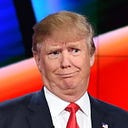Day 1,073: Federal study confirms tariffs were a disaster for U.S. manufacturers, workers and buyers
Donald Trump has tried touting his tariffs and trade wars with China, European countries and more as victories for Americans.
A recent study by the Federal Reserve debunks that claim.
Tariffs caused manufacturers to lay off employees and pay more to produce goods. Those higher prices were passed on to buyers.
We find that tariff increases enacted in 2018 are associated with relative reductions in manufacturing employment and relative increases in producer prices. In terms of manufacturing employment, rising input costs and retaliatory tariffs each contribute to the negative relationship, and the contribution from these channels more than offsets a small positive effect from import protection. For producer prices, the relative increases associated with tariffs are due solely to the rising input cost channel. We find little evidence for a relationship between industrial production and any of the three tariff channels considered.
And while the goal was to boost manufacturing, the tariffs didn’t help that endeavor.
“[T]ariffs have not boosted manufacturing employment or output, even as they increased producer prices. While the longer-term effects of the tariffs may differ from those that we estimate here, the results indicate that the tariffs, thus far, have not led to increased activity in the U.S. manufacturing sector.”
Retaliatory tariffs continued to hurt U.S. interests and weigh down any minor positive effects of the tariffs.
For manufacturing employment, a small boost from the import protection effect of tariffs is more than offset by larger drags from the effects of rising input costs and retaliatory tariffs. For producer prices, the effect of tariffs is mediated solely through rising input costs
Trump’s trade wars — going on for over two years — haven’t helped the industries he claimed they would. Instead, they’ve hurt them.
1,073 days in, 389 to go
Follow us on Twitter at @TrumpTimer
